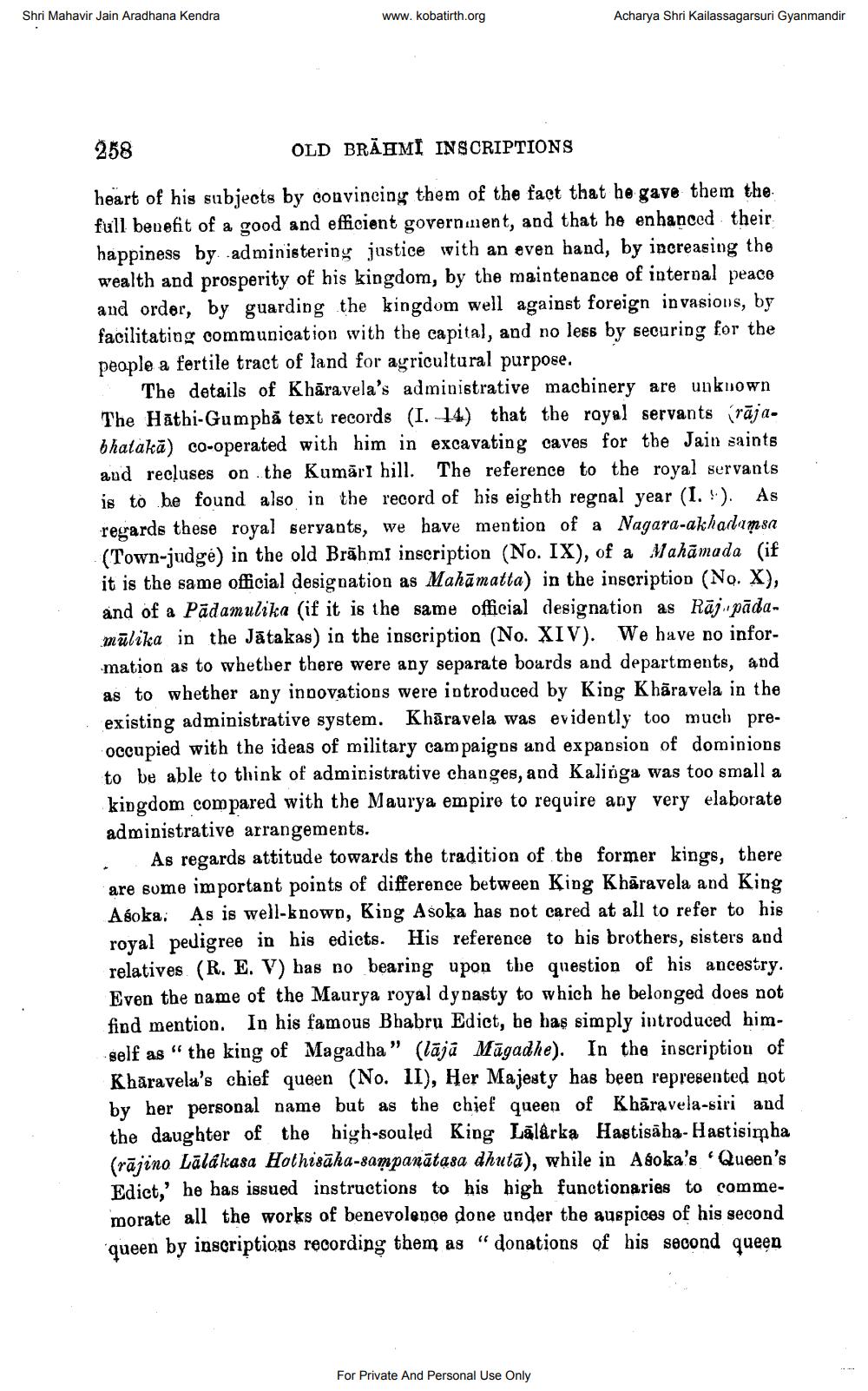________________
Shri Mahavir Jain Aradhana Kendra
www.kobatirth.org
Acharya Shri Kailassagarsuri Gyanmandir
258
OLD BRAHMI INSCRIPTIONS
heart of his subjects by convincing them of the fact that he gave them the full benefit of a good and efficient government, and that he enhanced their happiness by administeriny justice with an even hand, by increasing the wealth and prosperity of his kingdom, by the maintenance of internal peace and order, by guarding the kingdom well against foreign invasions, by facilitating communication with the capital, and no less by securing for the people a fertile tract of land for agricultural purpose.
The details of Khāravela's administrative machinery are unknown The Hathi-Gumpbă text records (I. 14) that the rayal servants (rāja. bhatakā) co-operated with him in excavating caves for the Jain saints and recluses on the Kumāri hill. The reference to the royal servants is to be found also in the record of his eighth regnal year (I. 9.). As regards these royal servants, we have mention of a Nagara-akhadımsa (Town-judge) in the old Brāhmi inscription (No. IX), of a Mahāmada (if it is the same official designation as Mahāmatta) in the inscription (No. X), and of a Padamulika (if it is the same official designation as Rāj pādamūlika in the Jātakas) in the inscription (No. XIV). We have no information as to whether there were any separate boards and departments, and as to whether any innovations were introduced by King Khāravela in the existing administrative system. Khāravela was evidently too much preoccupied with the ideas of military campaigns and expansion of dominions to be able to think of administrative changes, and Kalinga was too small a kingdom compared with the Maurya empire to require any very elaborate administrative arrangements.
As regards attitude towards the tradition of the former kings, there are some important points of difference between King Khāravela and King Asoka. As is well-known, King Asoka has not cared at all to refer to his royal pedigree in his edicts. His reference to his brothers, sisters and relatives (R. E. V) has no bearing upon the question of his ancestry. Even the name of the Maurya royal dynasty to which he belonged does not find mention. In his famous Bhabru Edict, be haş simply introduced himself as "the king of Magadha" (lājā Māgadhe). In the inscription of Khāravela's chief queen (No. 11), Her Majesty has been represented not by her personal name but as the chief queen of Khāravela-siri and the daughter of the high-souled King Lālárka Hastisäha-Hastisimha (rājino Lāldkasa Hothisäha-sampanātasa dhutā), while in Adoka's Queen's Edict," he has issued instructions to his high functionaries to commemorate all the works of benevolence done under the auspices of his second queen by inscriptions recording them as " donations of his second queen
For Private And Personal Use Only




